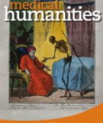The evolution of early symbolic behavior in Homo sapiens
New study published in PNAS shed light on some of the earliest examples of human symbolic behavior
New study in PNAS (Proceedings of the National Academy of Sciences of the United States of America) by IMC researchers Kristian Tylén, Riccardo Fusaroli, Katrin Heimann, Niels N. Johannsen and Felix Riede, with Sergio Rojo, Nicolas Fay and Marlize Lombard used 109k – 52k yo engravings in 5 experiments to investigate the early evolution of symbolic behavior
They found that the engravings evolved adaptively over 40k y to better resonate with human cognitive systems of vision, attention and memory. That is, they became more effective “tools for the mind” as their producers became skilled symbol makers
These observations suggest that the engravings were produced with aesthetic intent and possibly served as markers of group identity. However, they do not support an account of the engravings as a system of fully developed denotational symbols.
Article
Tylén, K., Fusaroli, R. Rojo, S., Heimann, K., Fay, N., Johannsen, N.N., Riede, F., Lombard, M. (In Press). The evolution of early symbolic behavior in Homo sapiens. Proceedings of the National Academy of Sciences, PNAS
Read the article here
Contact
Kristian Tylén, Associate Professor
School of Communication and Culture - Semiotics
Interacting Minds Centre



